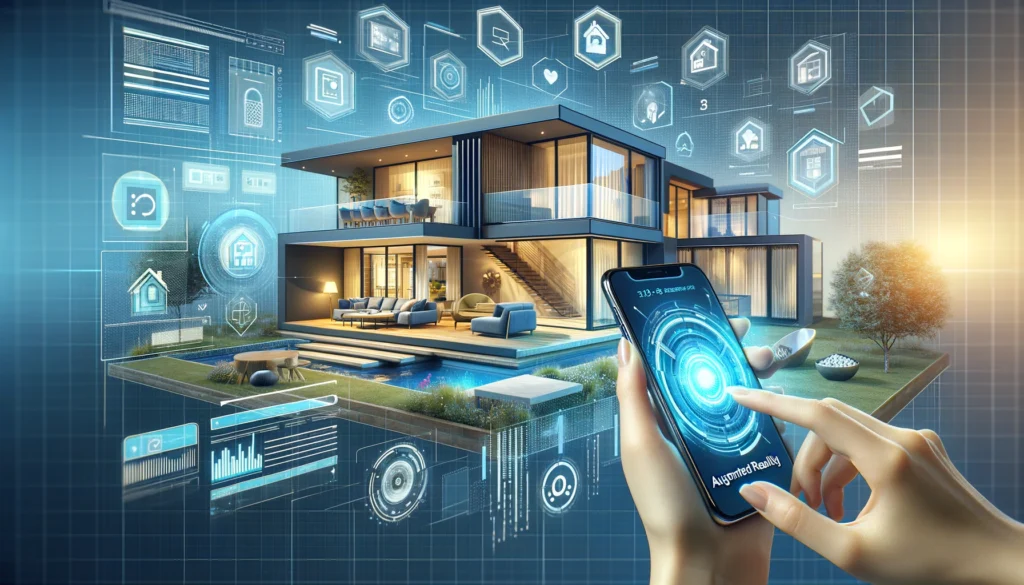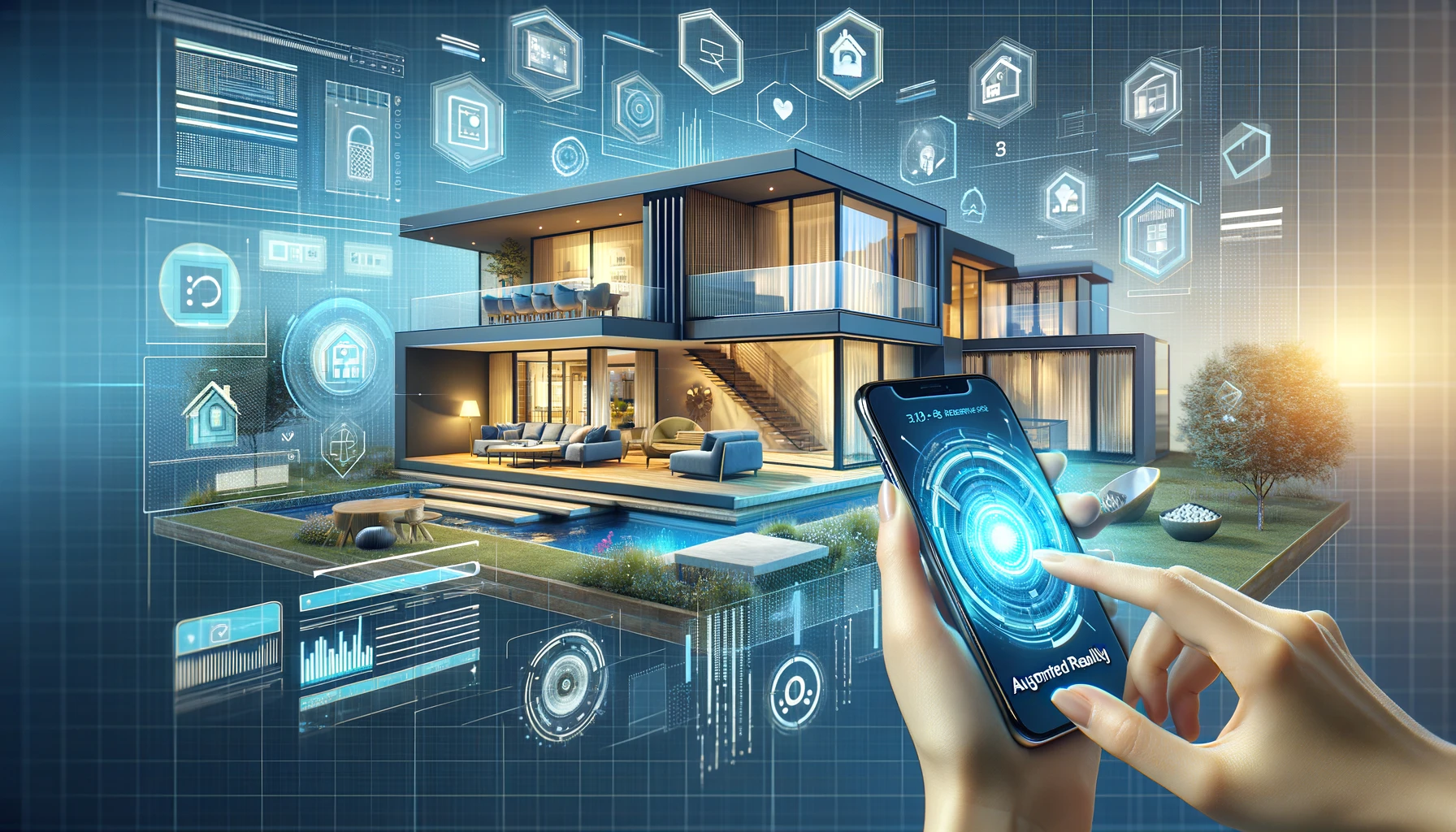
I. Introduction
The real estate industry has been undergoing a transformative shift as digital technologies reshape traditional practices. With more buyers beginning their property searches online and expecting immersive experiences, the need for innovation has never been greater. Among these advancements, augmented reality (AR) emerges as a game-changing tool, redefining how buyers and realtors interact with properties.
Augmented reality, which blends virtual elements with the physical world, has proven its worth across various sectors, and its application in real estate is particularly promising. AR enables virtual property showings that transcend the limitations of physical visits, offering unprecedented levels of accessibility and interactivity. In an increasingly competitive market, this technology not only meets modern buyers’ expectations but also gives realtors a powerful edge in presenting properties effectively.
Virtual property showings powered by AR are more than a trend—they’re a solution to the challenges posed by busy schedules, remote buyers, and the complexities of showcasing a property’s potential. As the industry evolves, understanding and leveraging AR can be the difference between staying ahead or falling behind in the competitive real estate landscape.
II. Understanding Augmented Reality (AR)
What is AR and how does it differ from VR?
Augmented reality overlays digital elements onto the real world using devices such as smartphones, tablets, or AR glasses. Unlike virtual reality (VR), which immerses users in entirely digital environments, AR enhances physical spaces by integrating interactive and context-aware features. This unique blend makes AR especially suited for applications that require a connection to real-world settings, such as real estate.
Applications of AR in Various Industries
From retail to healthcare, AR is revolutionizing industries. For example, furniture companies use AR to let customers visualize how a product would look in their homes. In education, AR enhances learning through interactive models. These successes provide a strong foundation for its application in real estate, where visualization is key.
Key Technologies Enabling AR
AR relies on advancements in hardware and software, including:
- AR Glasses and Headsets: Devices like Microsoft HoloLens bring immersive AR experiences to life.
- Mobile Devices: Smartphones and tablets democratize AR access with built-in cameras and sensors.
- Software Platforms: Tools like ARKit and ARCore enable developers to create sophisticated AR applications.
III. The Role of AR in Real Estate
Enhancing Virtual Property Tours
AR transforms property tours by overlaying digital furniture and decor onto empty spaces, enabling buyers to visualize various staging options. It can also provide interactive details, such as room dimensions and material descriptions, offering a deeper understanding of the property without stepping inside.
Facilitating Remote Property Viewings
For out-of-town or international buyers, AR provides a convenient way to explore properties remotely. Realtors can guide clients through AR-enhanced virtual walkthroughs, complete with annotations and customizable layouts, ensuring a tailored experience that addresses individual preferences.
Bridging Physical and Virtual Tours
AR doesn’t aim to replace traditional visits but to complement them. For instance, buyers can revisit a property virtually after an in-person showing to confirm details or explore potential design changes, creating a seamless hybrid experience.
IV. Benefits of AR in Virtual Property Showings
Increased Accessibility for Remote Buyers
AR eliminates geographical barriers, allowing buyers to explore properties from anywhere in the world. This accessibility broadens the market for sellers and simplifies the process for buyers who may otherwise struggle to visit multiple locations.
Cost and Time Savings
Both realtors and clients benefit from AR’s efficiency. By reducing the need for physical visits, AR minimizes travel expenses and time commitments, streamlining the property selection process.
Better Visualization of Property Potential
One of AR’s standout features is its ability to showcase a property’s potential. Buyers can experiment with different layouts, materials, and designs in real time, helping them make informed decisions.
Improved Decision-Making
With interactive data presentation, buyers gain a comprehensive understanding of the property. From energy efficiency metrics to structural details, AR provides essential information at a glance, fostering confidence in their choices.
V. Challenges and Limitations of AR in Real Estate
Technical Barriers
Developing and implementing AR solutions can be costly, especially for small real estate firms. Compatibility issues between hardware and software further complicate adoption.
Adoption Challenges
Realtors and clients may face a learning curve when using AR tools. Ensuring that both parties are comfortable with the technology is crucial for successful implementation.
Privacy and Data Security Concerns
AR applications often require access to sensitive data, raising privacy concerns. Addressing these issues with robust security measures is essential to building trust.
VI. Future Trends and Innovations
Integration with AI
Combining AR with artificial intelligence (AI) can unlock predictive insights, such as identifying properties that align with a buyer’s preferences.
AR-Enabled Smart Contracts
Blockchain technology could integrate with AR to streamline transactions, offering transparent and secure processes.
Advancements in Hardware
The development of lightweight AR glasses and haptic feedback technologies will enhance user experiences, making AR more intuitive and immersive.
Tailored AR Platforms
As demand grows, specialized AR platforms designed for real estate professionals will emerge, providing industry-specific tools and features.
VII. Case Studies
Success Stories
Real estate companies like Zillow have embraced AR to improve property marketing. Buyers have reported greater satisfaction when using AR-enhanced tools, citing better visualization and more confident decision-making.
Lessons Learned
Early adopters highlight the importance of investing in user-friendly interfaces and ensuring compatibility across devices. These insights are invaluable for firms considering AR adoption.
VIII. Conclusion
Augmented reality is revolutionizing the way properties are marketed and sold, offering an unparalleled blend of accessibility, interactivity, and efficiency. For buyers, AR simplifies the search process, enabling them to explore properties and visualize potential designs from the comfort of their homes. For realtors, it’s a tool that enhances listings, broadens reach, and elevates client experiences.
As AR technology continues to advance, its role in real estate will only grow. Professionals who embrace this innovation stand to gain a competitive edge, positioning themselves as leaders in a rapidly evolving market.
The future of real estate lies in embracing tools like AR to create meaningful, immersive, and efficient experiences. By investing in this technology, the industry can unlock new opportunities, transforming virtual property showings into a standard practice that benefits buyers and sellers alike.






